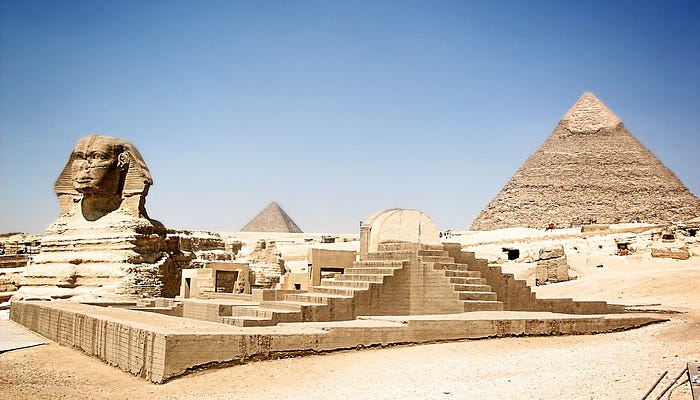The pyramids of Giza are grand monuments, but what's inside them and the other ancient
Egyptian pyramids? (Image credit: Ratnakorn Piyasirisorost via Getty Images)
When British archaeologist Howard Carter cracked open King Tutankhamun's tomb in 1922, he reported seeing "wonderful things." Tut's tomb was filled with extraordinary treasures, including the golden death mask of Tutankhamun, a golden throne and even gold sandals. But did all royal tombs in ancient Egypt have such plush grave goods?
The answer is no. While the Great Pyramid of Giza and other ancient Egyptian pyramids are incredible monuments, the burial goods inside them were likely relatively modest compared with those buried in the tombs of later pharaohs, such as Tutankhamun.
"The burials in the biggest pyramids might have looked quite simple in comparison to Tutankhamun," Wolfram Grajetzki, an honorary senior research fellow at University College London in the U.K. who has studied and written extensively about ancient Egyptian burial customs and burial goods, told Live Science in an email.
Pyramids were used as Egyptian pharaohs' tombs from the time of Djoser (reign circa 2630 B.C. to 2611 B.C.) to Ahmose I (reign circa 1550 B.C. to 1525 B.C.). Most of these pyramids were plundered centuries ago, but a few royal tombs have remained relatively intact and provide clues about their treasures, Grajetzki said.
For instance, Princess Neferuptah (who lived around 1800 B.C.) was buried in a pyramid at the site of Hawara, around 60 miles (100 kilometers) south of Cairo. Her burial chamber was excavated in 1956 and "contained pottery, a set of coffins, some gilded personal adornments and a set of royal insignia that identify her with the Underworld god Osiris," Grajetzki said.
King Hor (who lived around 1750 B.C.) was buried with a similar set of objects, although he wasn't buried in a pyramid, Grajetzki said. "The body of [Hor] was wrapped in linen, the entrails placed into special containers, called canopic jars," Grajetzki said. "His face was covered with a mummy mask." READ MORE...


 Picture from
Picture from